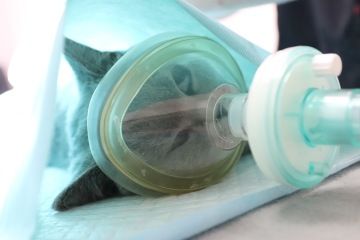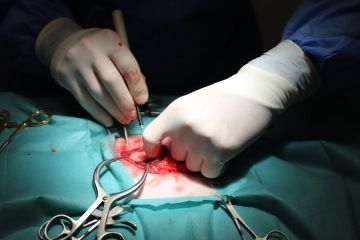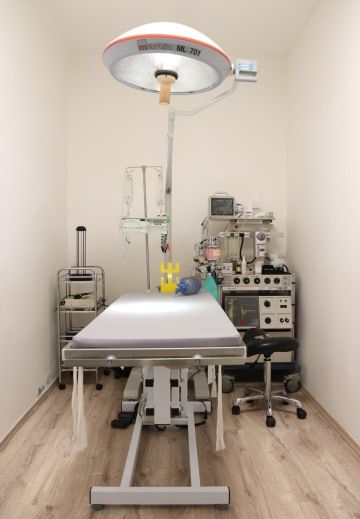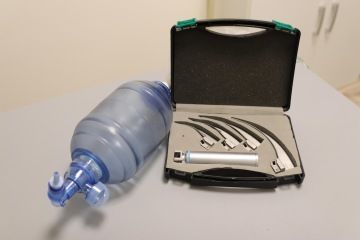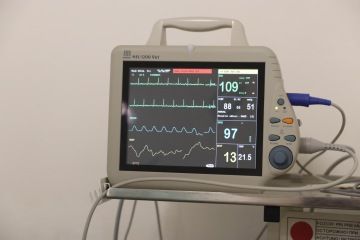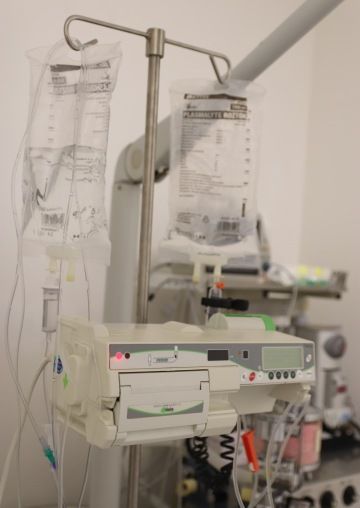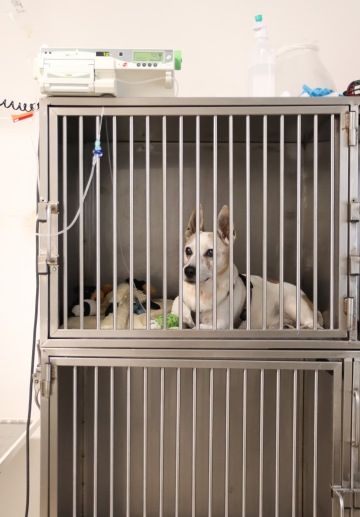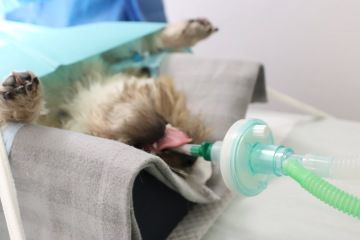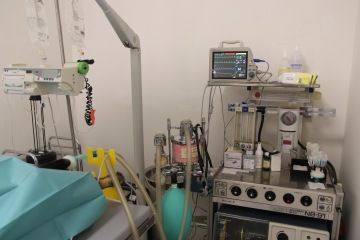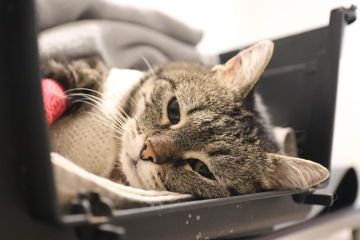Inhalation anesthesia
2 years ago
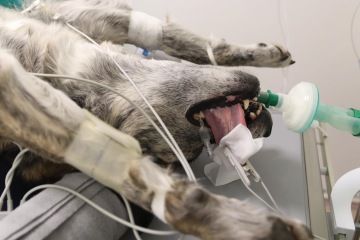
There is a general fear of anesthesia among people. Of course, every anesthesia carries risks, but today's methods and proper examination (before surgery - blood analysis, X-ray, sono) of the patient minimize this risk. Thanks to that/because of this, old age does not mean the impossibility of putting the animal under the anasthesia. Nowadays, we are able to create a "tailored anesthesia" for each patient.
At HANIMA Veterinary Clinic, we use inhalation anesthesia for all larger, longer and more painful surgical procedures.
Preparing the patient at home (before the procedure):
Food: the animal must be fasted before general anesthesia! Do not give him food 6-8 hours before the planned (elective) procedure.
Water: take water approximately 2 hours before the planned (elective) performance.
Walks: as normal.
What happens at the clinic:
Patients first receive an injection that induces analgosedation (the so-called "sedation") - it ensures relaxation, loss of pain perception and anxiety. Then we introduce a cannula into their vein, which we administer premedication and intravenous anesthesia. We will put the patient under "weaker" anesthesia - only then can the patient be intubated (tube in the throat) and connected to an inhalation device and put into full anesthesia using anesthetic gases. During the entire procedure, their infusion solution drips.
Patient monitoring during anesthesia:
Patients are constantly monitored using a monitoring device and an anesthesiologist present - careful monitoring allows to prevent or timely treat disorders of the physiological state of the operated patient and thus prevent subsequent postoperative complications or even the death of the patient.
Using the monitoring device, we monitor:
EKG
blood pressure (non-invasively, using a cuff)
heart rate
blood oxygen saturation (using a pulse oxymeter with a plethysmographic curve)
respiratory parameters (respiratory rate)
temperature
After surgery:
After the operation, the patient gradually wakes up from anesthesia on the operating table and is constantly monitored - only when the patient is breathing on his own and is conscious, we move him to the hospital box, where he can sleep. When he is able to walk, he goes home - a decent "drunk walk" is tolerated. It is important to realize that each patient reacts to anesthesia differently - some are fully ready to leave in 30 minutes, others in 2 hours.
Regime after coming home:
The pet can be tired and sleepy and therefore it is important that it has the opportunity to rest. You can give half a dose of food 3 hours after the exercise, water immediately. Of course, the regimes change depending on the surgical procedure (for example, after castration of the female it is important to avoid jumping, after dental surgery only soft food is given,...). You will always receive all the instructions from us together with the medication and the check-up date before leaving the clinic.
Currently, veterinary anesthesiology is significantly approaching human anesthesiology in terms of its possibilities. Be sure not to be afraid to discuss everything in advance and ask questions to understand. We will be happy to explain everything!

